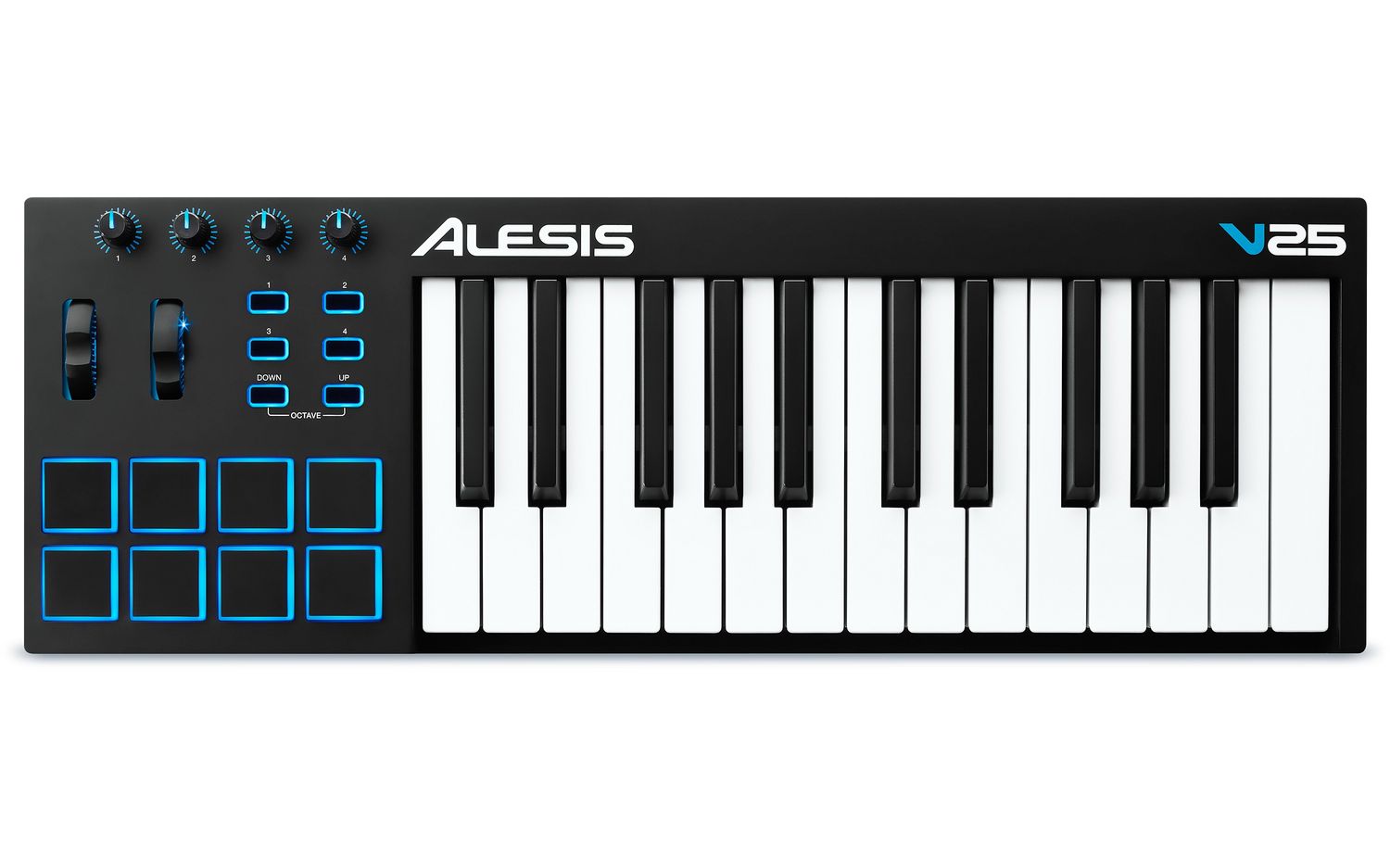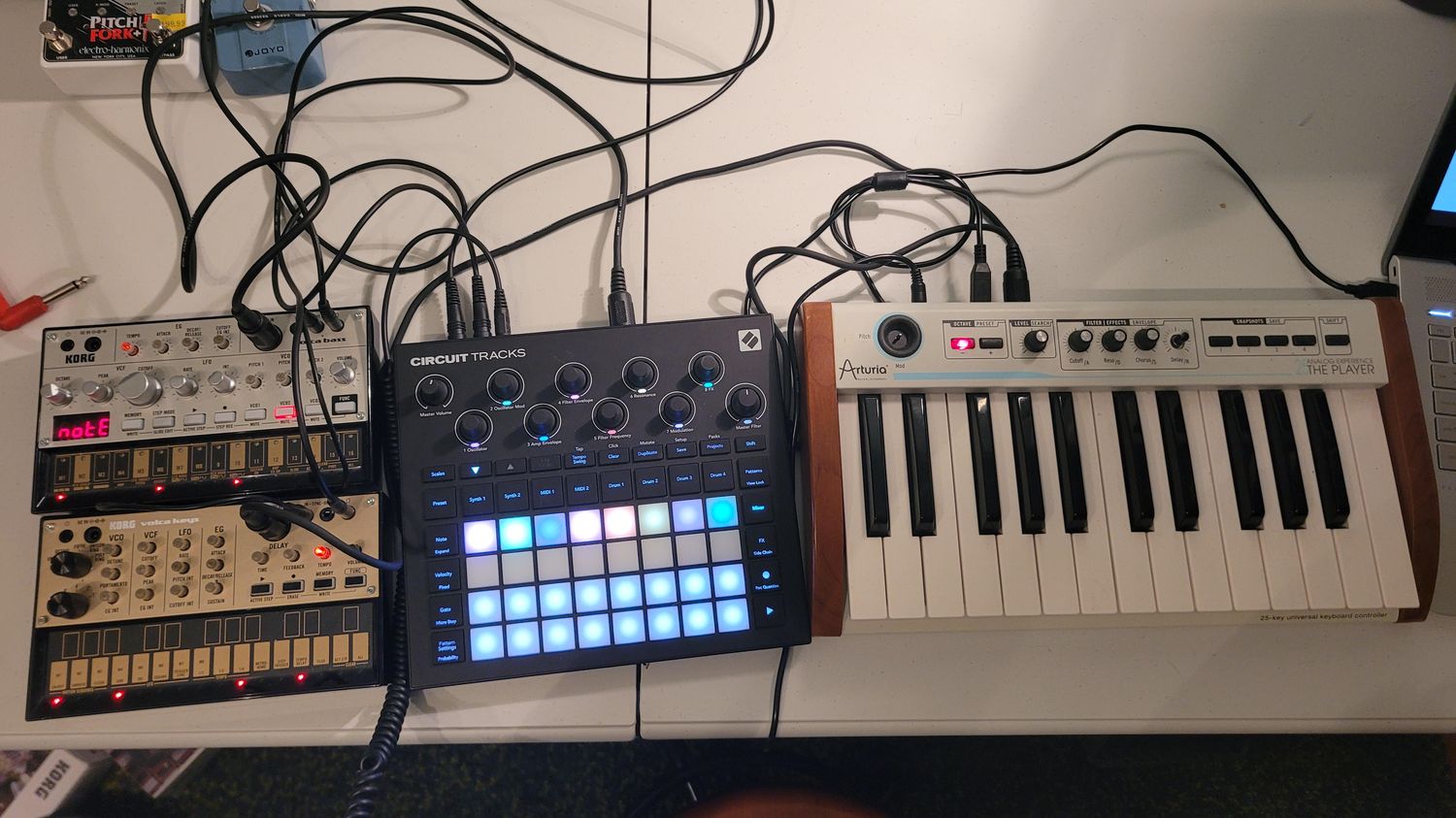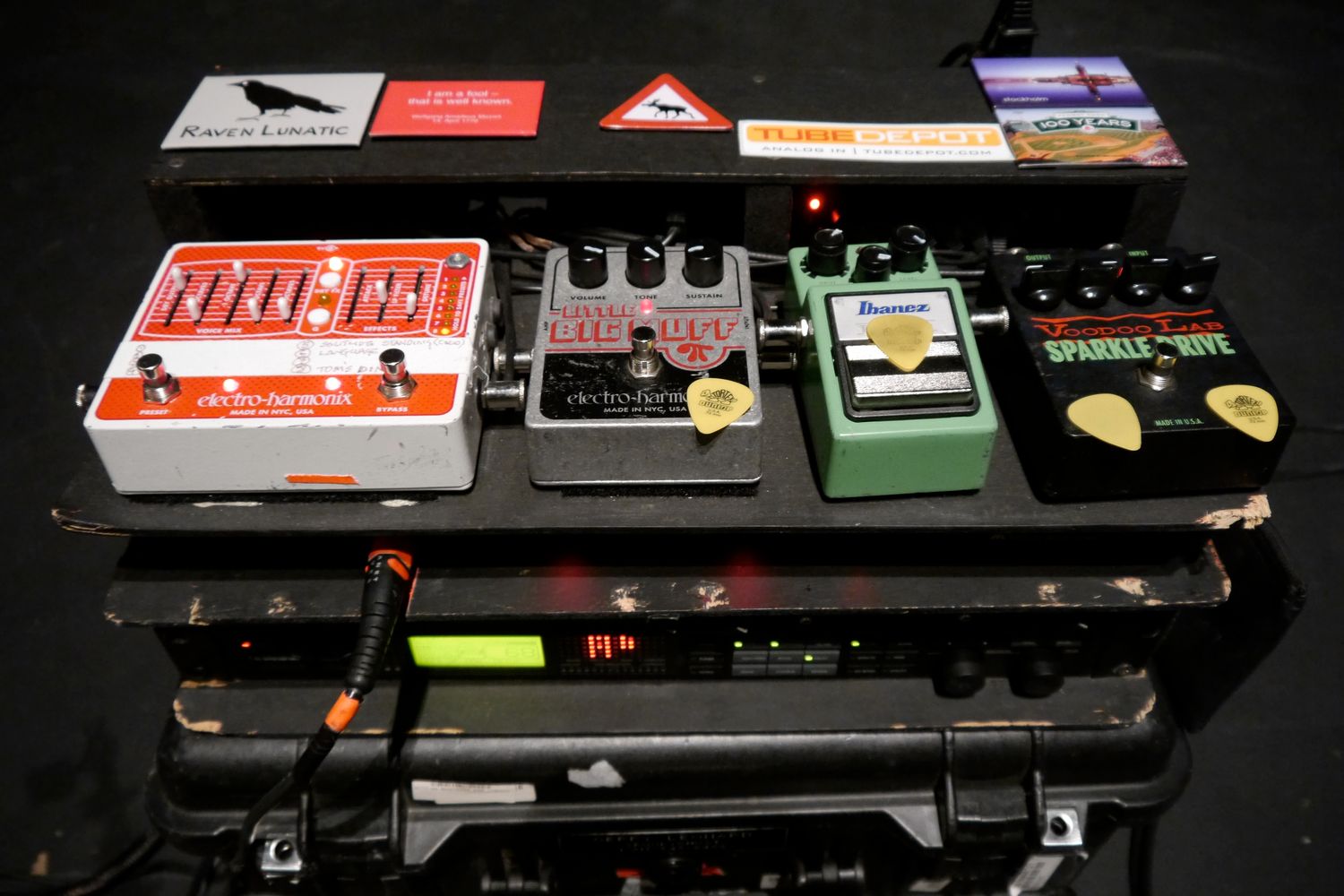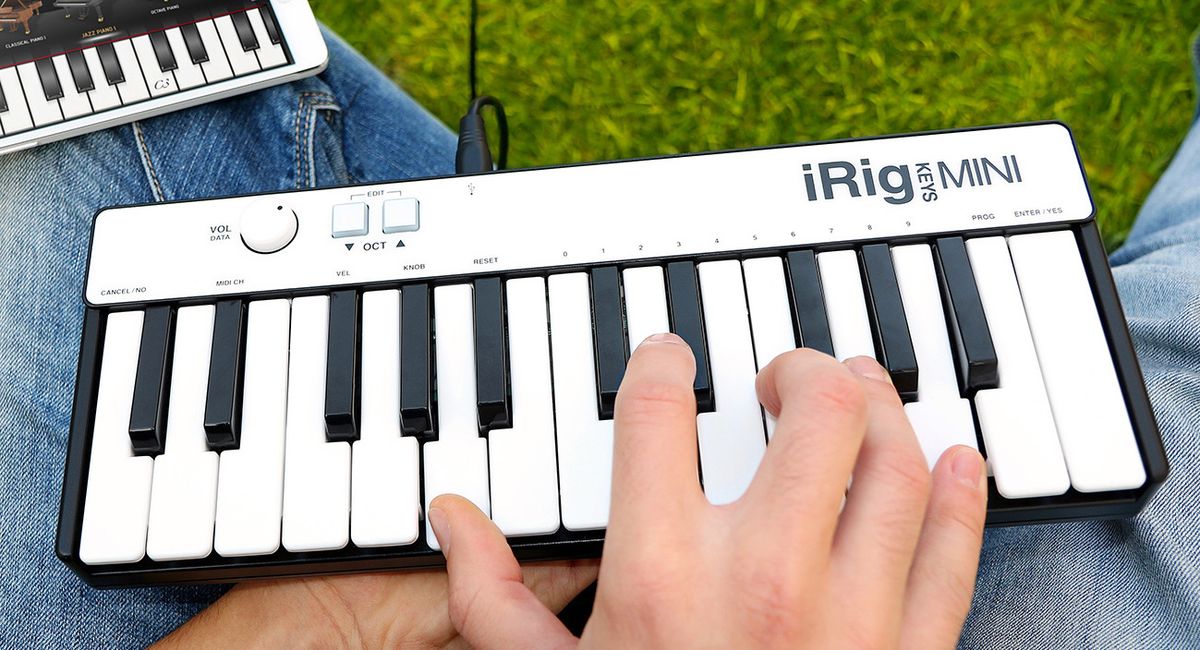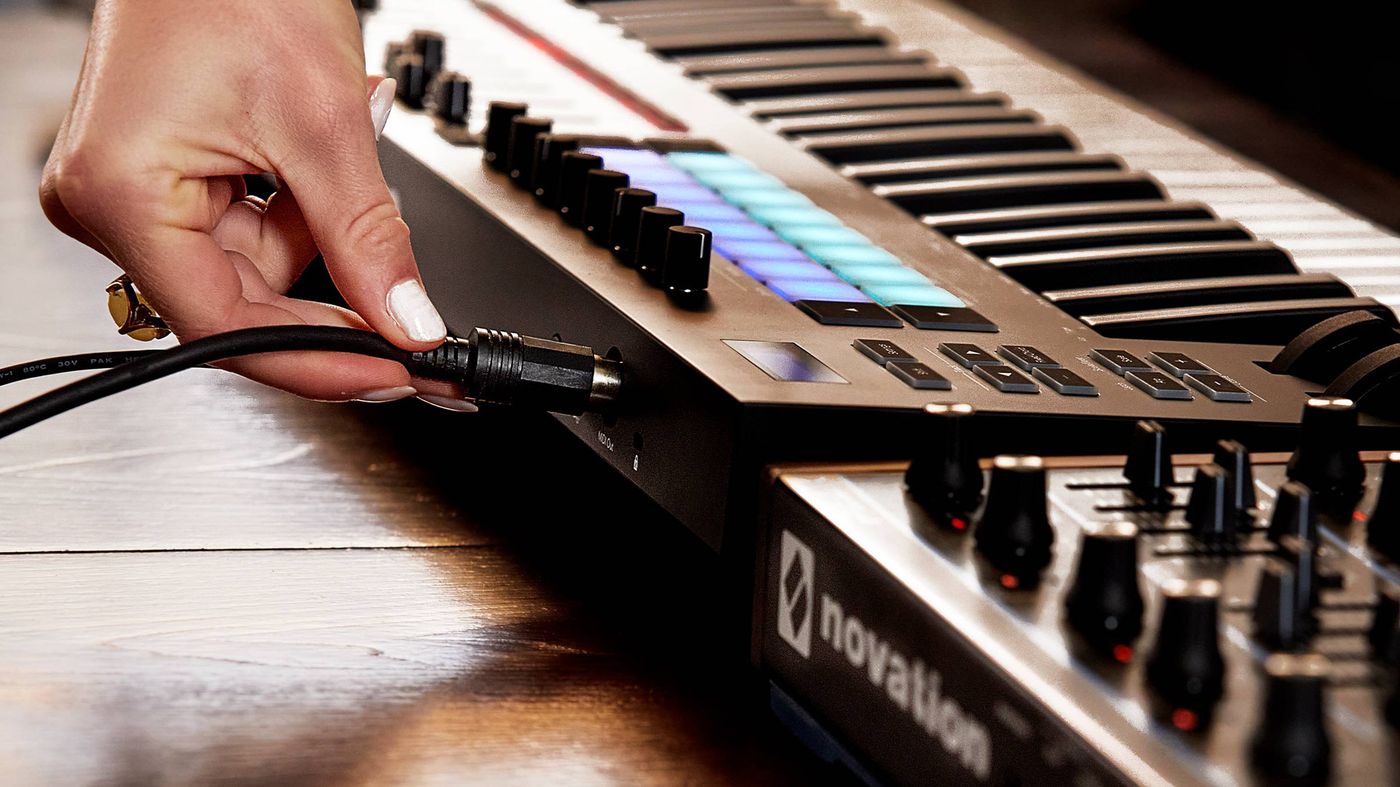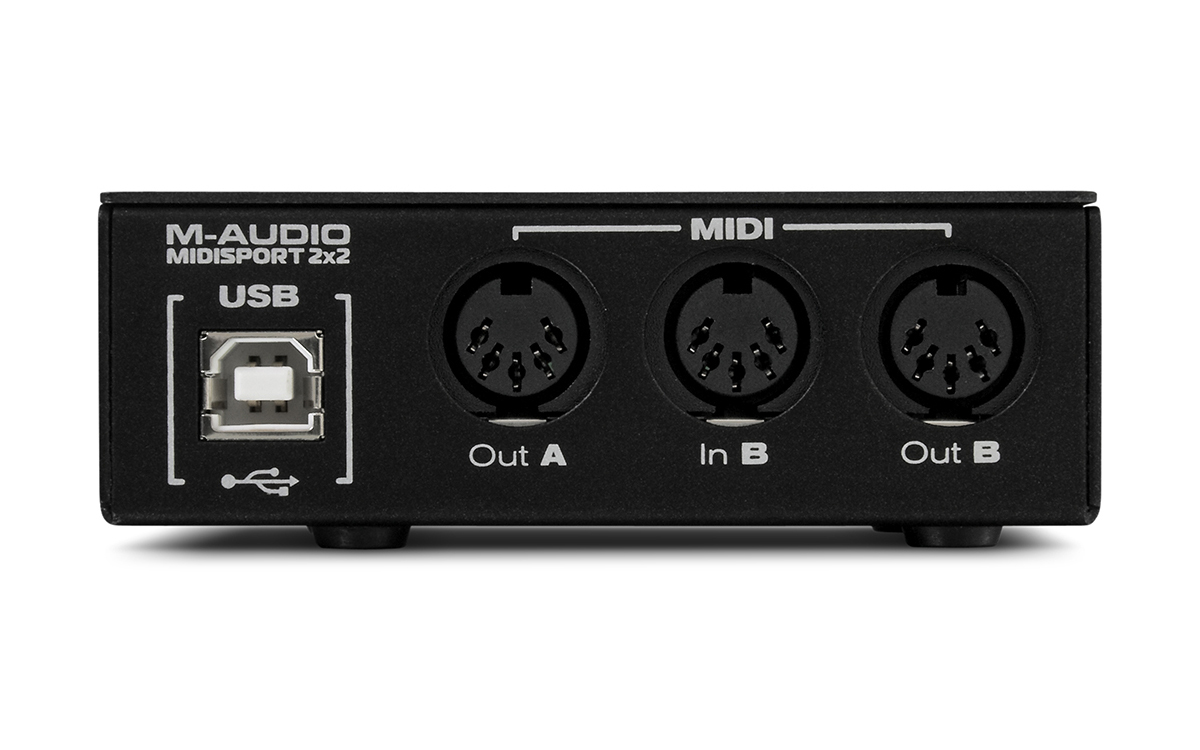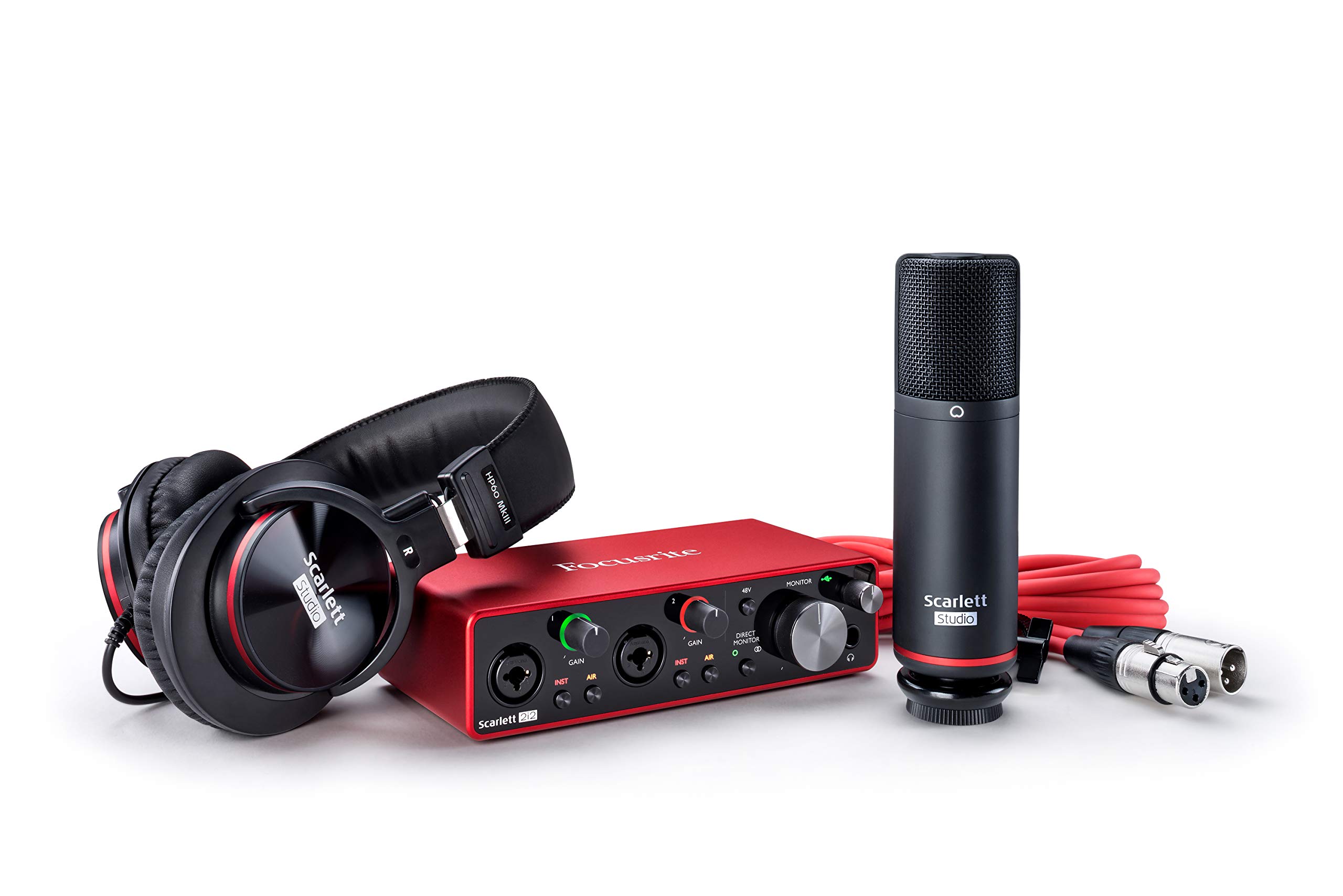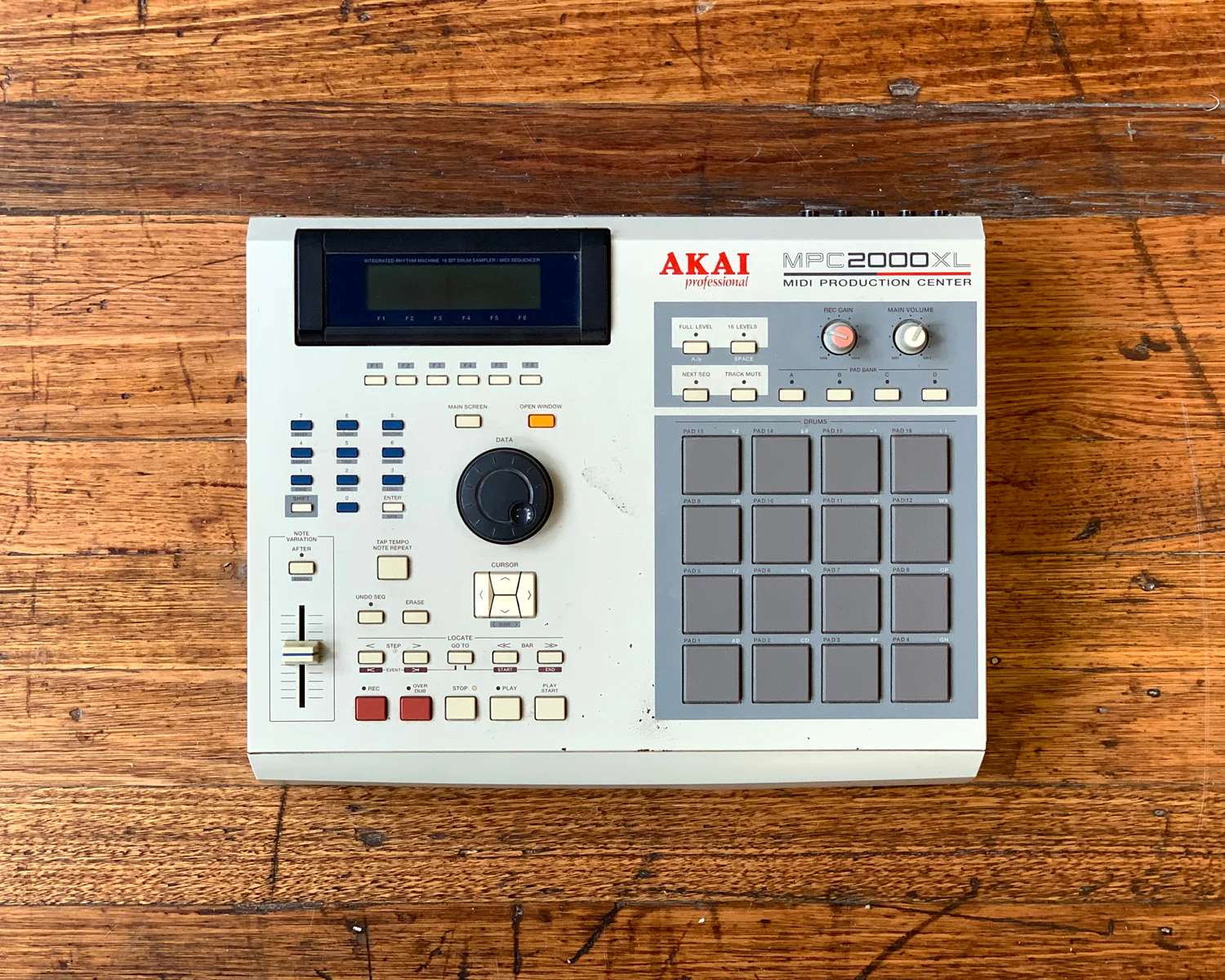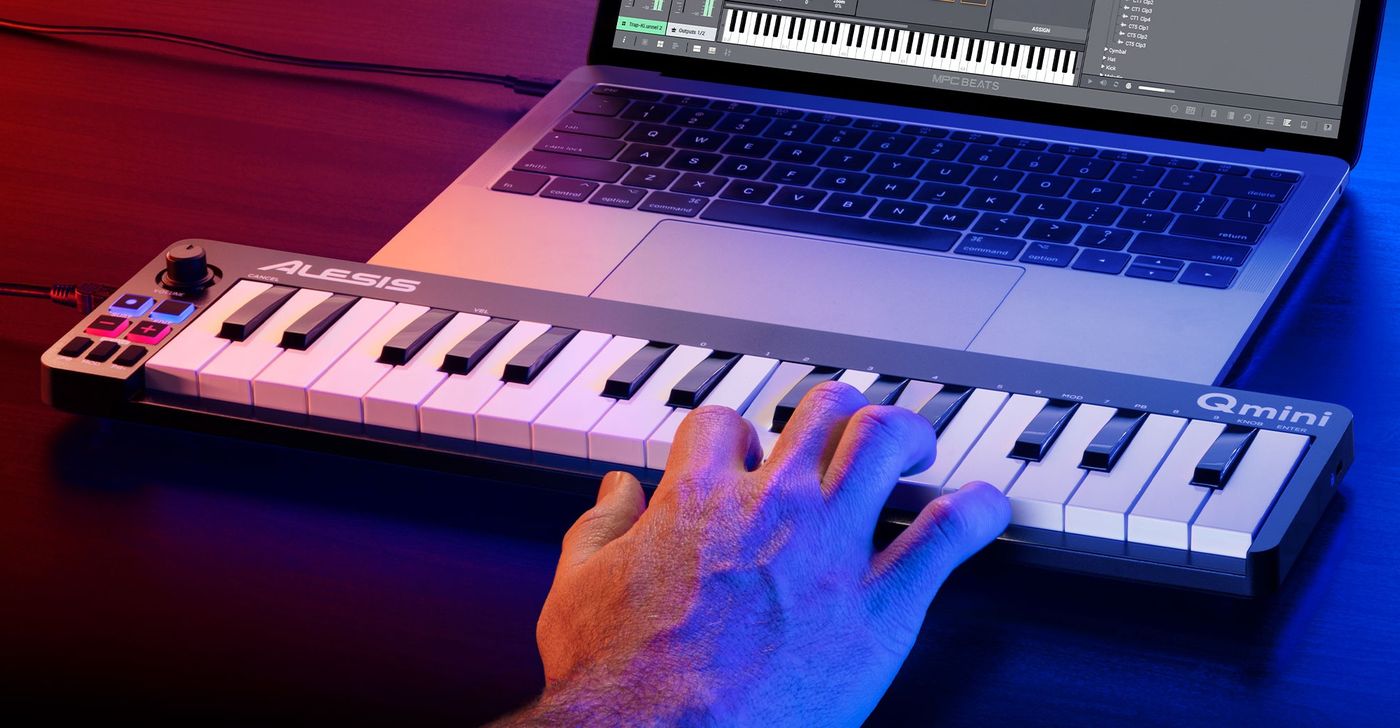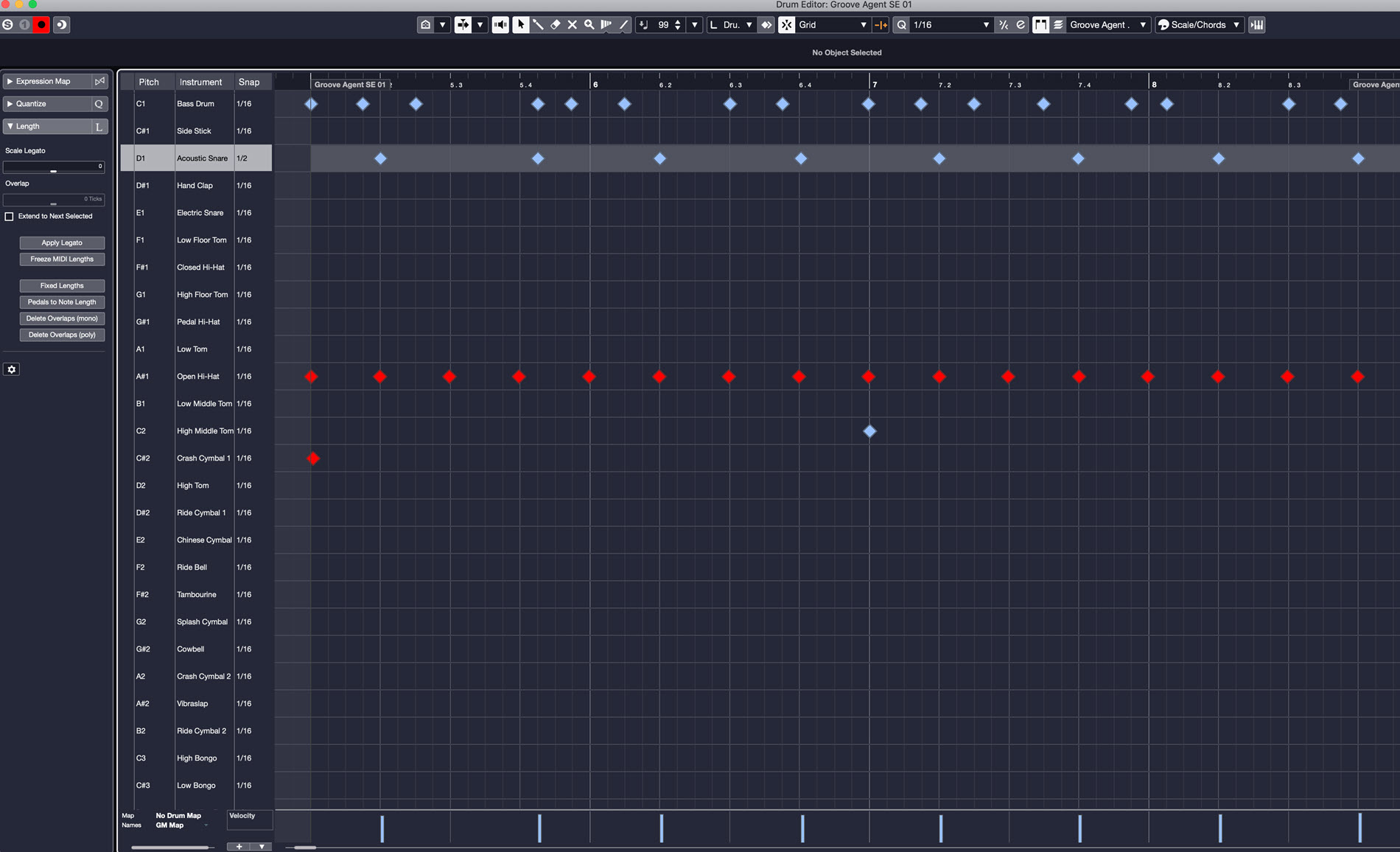Home>Production & Technology>MIDI>How To Connect MIDI To MPC
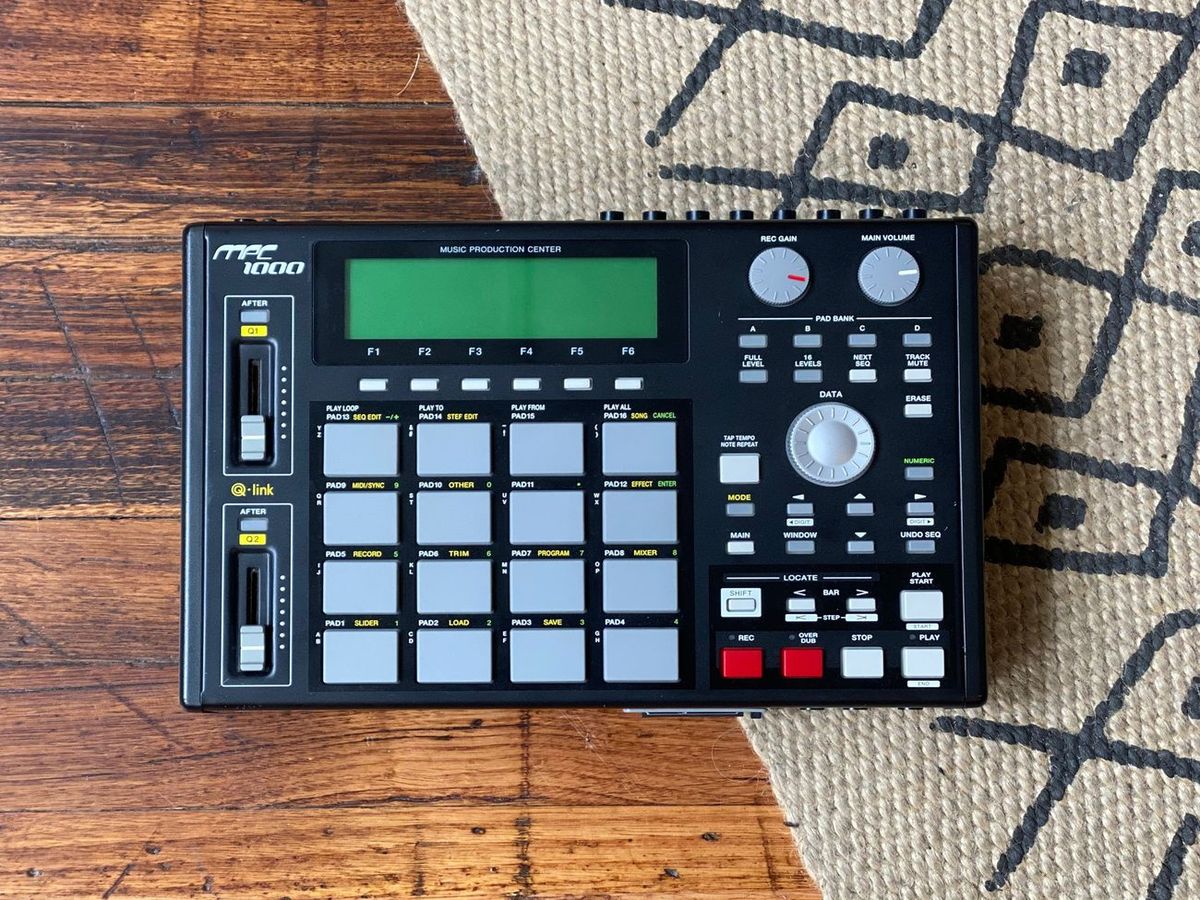

MIDI
How To Connect MIDI To MPC
Modified: March 9, 2024
Learn how to easily connect MIDI to MPC and enhance your music production setup. Follow these simple steps to integrate MIDI with your MPC and elevate your music creation process.
(Many of the links in this article redirect to a specific reviewed product. Your purchase of these products through affiliate links helps to generate commission for AudioLover.com, at no extra cost. Learn more)
Table of Contents
Introduction
MIDI, which stands for Musical Instrument Digital Interface, is a powerful tool that allows musicians and producers to connect a wide range of musical devices and equipment. Whether you're a seasoned music professional or just starting out in the world of music production, understanding how to connect MIDI to an MPC (Music Production Center) can significantly enhance your creative capabilities.
By harnessing the capabilities of MIDI, you can seamlessly integrate different musical instruments, controllers, and software applications, enabling you to craft intricate compositions and control various aspects of your music production setup. The ability to connect MIDI to an MPC opens up a world of possibilities, empowering you to create, manipulate, and perform music in ways that were previously unimaginable.
In this comprehensive guide, we will delve into the intricacies of MIDI, explore the process of connecting MIDI to an MPC, and provide detailed insights into setting up MIDI within the MPC environment. Whether you're looking to expand your music production setup or simply curious about the potential of MIDI technology, this guide will equip you with the knowledge and skills to harness the full potential of MIDI in conjunction with your MPC.
Let's embark on this journey to unravel the wonders of MIDI and MPC integration, unlocking new avenues for musical expression and creativity.
Understanding MIDI
MIDI, short for Musical Instrument Digital Interface, serves as the universal language of digital music production and performance. It revolutionizes the way musical instruments, controllers, and software communicate with each other, offering a seamless platform for creative expression and technical integration. At its core, MIDI enables devices to transmit and receive musical data, encompassing note information, control signals, and various parameters that shape the sonic landscape.
The Language of Musical Communication
MIDI operates as a versatile communication protocol, facilitating the exchange of musical information between different devices. This encompasses a wide array of musical elements, including note-on and note-off commands, velocity (the force with which a note is played), pitch bend, modulation, sustain, and more. Through MIDI, a keyboard can trigger the sound of a synthesizer, a drum pad can initiate a sample, and a sequencer can control the tempo and arrangement of a composition.
MIDI Messages and Channels
MIDI messages serve as the carriers of musical instructions, conveying data such as note values, dynamics, and timing information. These messages are transmitted across 16 MIDI channels, each capable of carrying independent streams of musical data. This channel-based system allows for the simultaneous control of multiple instruments and parameters within a music production environment, offering a level of flexibility and control that is fundamental to modern music production.
MIDI Connectivity and Integration
One of the most compelling aspects of MIDI is its ability to seamlessly integrate a diverse range of musical equipment and software. Whether connecting a MIDI keyboard to a digital audio workstation (DAW), synchronizing drum machines and sequencers, or controlling virtual instruments and effects, MIDI serves as the linchpin that unifies disparate elements into a cohesive musical ecosystem. This integration empowers musicians and producers to craft intricate compositions, perform live with electronic instruments, and explore innovative sonic territories.
The Evolution of MIDI
Since its inception in the early 1980s, MIDI has continually evolved to keep pace with the advancements in music technology. From the introduction of MIDI 2.0, which promises enhanced capabilities and extended features, to the proliferation of USB MIDI controllers and wireless MIDI solutions, the landscape of MIDI continues to expand, offering new possibilities for creative expression and technical innovation.
Embracing the Power of MIDI
Understanding MIDI is essential for anyone seeking to harness the full potential of digital music production and performance. By comprehending the intricacies of MIDI messages, channels, connectivity, and its evolution, musicians and producers can leverage this powerful tool to unlock new realms of creativity and expression, propelling their musical endeavors to new heights. Whether you're a seasoned professional or an aspiring enthusiast, embracing the power of MIDI opens doors to a world of musical possibilities, where innovation and imagination converge to shape the future of music.
This comprehensive understanding of MIDI sets the stage for exploring the process of connecting MIDI to an MPC, a journey that promises to expand the horizons of music production and performance.
Connecting MIDI to MPC
Connecting MIDI to an MPC (Music Production Center) is a pivotal step in expanding the creative potential of your music production setup. By establishing this connection, you can seamlessly integrate external MIDI devices, such as keyboards, synthesizers, drum machines, and controllers, into the MPC environment, unlocking a myriad of possibilities for musical expression and performance.
To initiate the process of connecting MIDI to your MPC, you will need a MIDI interface or MIDI-equipped hardware that facilitates the transmission of MIDI data between devices. This interface serves as the bridge that enables your MPC to communicate with external MIDI devices, establishing a cohesive network where musical information flows seamlessly.
Once you have the necessary MIDI interface or hardware, the physical connection between your MPC and external MIDI devices can be established using MIDI cables. These cables transmit the MIDI data, comprising note information, control signals, and various musical parameters, between the MPC and the connected devices. It is essential to ensure that the MIDI cables are securely connected to the MIDI input and output ports of both the MPC and the external MIDI devices, fostering a reliable and stable connection.
Upon successfully establishing the physical connection, your MPC is now primed to interact with the external MIDI devices, enabling you to trigger sounds, control parameters, and synchronize musical elements within your production environment. Whether you seek to integrate a MIDI keyboard for melodic input, a synthesizer for rich textures, or a drum machine for rhythmic accents, the connection between MIDI and your MPC opens up a world of sonic possibilities, empowering you to craft intricate compositions and perform with unparalleled versatility.
Furthermore, by connecting MIDI to your MPC, you can leverage the expansive libraries of MIDI-compatible instruments and controllers, seamlessly incorporating them into your music production workflow. This integration allows you to harness the diverse sonic palettes and performance capabilities offered by external MIDI devices, expanding your creative horizons and enhancing the depth and richness of your musical productions.
In essence, the process of connecting MIDI to your MPC serves as a gateway to a universe of musical exploration, where the boundaries of creativity are expanded, and the potential for artistic innovation knows no limits. By forging this connection, you embark on a journey that transcends conventional musical paradigms, paving the way for boundless creativity and sonic expression within your MPC-driven music production environment.
Setting up MIDI in MPC
Setting up MIDI in your MPC (Music Production Center) is a pivotal step that empowers you to harness the full potential of MIDI integration within your music production environment. By configuring MIDI settings within your MPC, you can establish seamless communication with external MIDI devices, unlocking a myriad of creative possibilities and performance capabilities.
Accessing MIDI Settings
To initiate the process of setting up MIDI in your MPC, navigate to the MIDI settings menu within the device's interface. This menu serves as the control center for configuring MIDI input and output parameters, enabling you to tailor the MIDI functionality to suit your specific production requirements.
MIDI Input Configuration
Within the MIDI settings menu, you can configure the MIDI input parameters to define how your MPC receives MIDI data from external devices. This encompasses specifying the MIDI input channel, enabling MIDI clock synchronization, and calibrating MIDI input settings to ensure optimal responsiveness and accuracy.
MIDI Output Configuration
In addition to MIDI input settings, the MIDI settings menu allows you to configure the MIDI output parameters, governing how your MPC transmits MIDI data to external devices. This involves defining the MIDI output channel, configuring MIDI clock output settings, and fine-tuning MIDI output parameters to facilitate seamless interaction with connected MIDI devices.
MIDI Mapping and Assignments
Furthermore, setting up MIDI in your MPC involves mapping MIDI controls and assigning MIDI parameters to various functions within the MPC environment. This process enables you to customize the behavior of external MIDI controllers, instruments, and devices, aligning them with specific functions and parameters within your MPC workflow.
Integration with MIDI-Compatible Instruments
By configuring MIDI settings within your MPC, you can seamlessly integrate MIDI-compatible instruments, controllers, and devices into your music production setup. This integration facilitates the seamless exchange of musical data, empowering you to trigger sounds, control parameters, and synchronize musical elements across a diverse array of MIDI-enabled hardware and software.
Optimizing MIDI Performance
Once the MIDI settings are configured within your MPC, it is essential to optimize the MIDI performance to ensure reliable and responsive operation. This involves fine-tuning latency settings, optimizing MIDI clock synchronization, and calibrating MIDI input/output parameters to minimize latency and maximize the precision of MIDI communication.
Embracing the Potential of MIDI in MPC
By meticulously setting up MIDI in your MPC, you embark on a journey that transcends conventional musical paradigms, unlocking a world of creative expression and technical integration. The seamless communication between your MPC and external MIDI devices empowers you to explore new sonic territories, craft intricate compositions, and perform with unparalleled versatility, harnessing the transformative power of MIDI within your music production endeavors.
In essence, the process of setting up MIDI in your MPC serves as a gateway to a universe of musical exploration, where the boundaries of creativity are expanded, and the potential for artistic innovation knows no limits. Through meticulous configuration and optimization of MIDI settings, you lay the foundation for a seamless and immersive MIDI experience within your MPC-driven music production environment.
Conclusion
In conclusion, the integration of MIDI with an MPC (Music Production Center) represents a pivotal convergence of technology and creativity, offering musicians and producers a gateway to boundless sonic exploration and artistic innovation. By understanding the intricacies of MIDI, establishing physical connections between devices, and meticulously configuring MIDI settings within the MPC environment, individuals can unlock a universe of musical possibilities that transcend conventional paradigms.
The journey of connecting MIDI to an MPC begins with a profound appreciation for the transformative power of MIDI technology. As the universal language of digital music production and performance, MIDI serves as the linchpin that unifies disparate musical devices and software, enabling seamless communication and control across a diverse array of instruments and controllers. This foundational understanding sets the stage for embarking on the process of physically connecting MIDI devices to the MPC, fostering a network of musical exchange that amplifies creative potential and performance capabilities.
Furthermore, the process of setting up MIDI within the MPC environment serves as a testament to the meticulous craftsmanship and technical prowess that underpins modern music production. By configuring MIDI input and output parameters, mapping MIDI controls, and optimizing MIDI performance, individuals can tailor the MIDI functionality to suit their specific production requirements, fostering a seamless and immersive MIDI experience that transcends traditional boundaries.
The culmination of this journey manifests in a harmonious synergy between the MPC and external MIDI devices, where musical ideas seamlessly traverse the digital realm, giving rise to intricate compositions, captivating performances, and innovative sonic landscapes. The integration of MIDI with an MPC empowers musicians and producers to explore new frontiers of musical expression, leveraging the diverse sonic palettes and performance capabilities offered by MIDI-compatible instruments and controllers.
In essence, the journey of connecting MIDI to an MPC is a testament to the unyielding spirit of innovation and creativity that defines the realm of music production. It is a journey that transcends technical intricacies and resonates with the essence of artistic expression, offering a platform where imagination converges with technology to shape the future of music.
As we conclude this exploration, it becomes evident that the integration of MIDI with an MPC is not merely a technical endeavor but a transformative odyssey that emboldens individuals to push the boundaries of creativity, embrace the unknown, and weave intricate tapestries of sound that resonate with the very essence of musical artistry. It is a journey that invites us to embrace the boundless potential of MIDI technology within the MPC environment, where the convergence of innovation and imagination gives rise to a symphony of endless possibilities, echoing through the fabric of musical creation.

